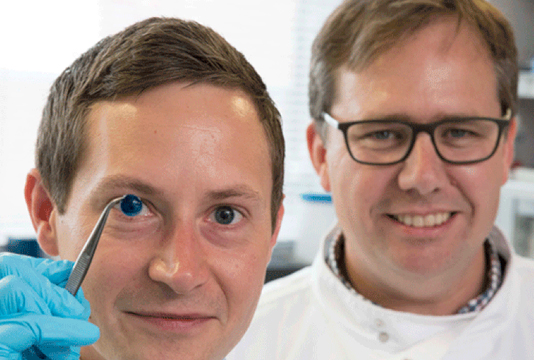LONDON, May 31, 2018 (BSS/Xinhua) – Human corneas have successfully been
3D printed for the first time by scientists at Newcastle University in
England.
By mixing stem cells from a healthy donor cornea with alginate, a gel
derived from seaweed, and collagen, researchers managed to create a “bio-ink”
solution that can be printed.
This bio-ink then would be successfully expelled out of the printer in
concentric circles in the shape of a cornea in less than 10 minutes,
according to a paper published in Experimental Eye Research.
“Our unique bio-gel — a combination of alginate and collagen — keeps the
stem cells alive while producing a material which is stiff enough to hold its
shape but soft enough to be squeezed out the nozzle of a 3D printer,” said
lead researcher Che Connon in a press release.
Connon’s team also showed it is possible to create a cornea that matches a
patient’s unique specifications.
By taking the dimensions of the patient’s actual cornea with scans,
scientists can use the data to print a cornea that matches its size and
shape.
The 3D printed corneas will now have to undergo further testing but it is
hoped the technique could be in regular use within five years.
Professor Connon said the research could help with the worldwide shortage
of corneas for transplant.
Currently around 10 million people worldwide each year require surgery to
prevent corneal blindness, and another five million already suffer total
blindness from corneal scarring caused by burns, lacerations, abrasion or
disease.



